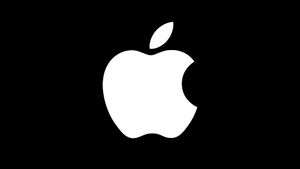YOGYAKARTA - For some people email and webmail are considered the same, but is that so? Yes, the answer is clearly different. Want to know what are the differences in email and webmail?
E-mail is one of the communication platforms that users usually use to support various work activities. Especially in business and office activities. Likewise, the term webmail is also quite often used by users for various purposes.
In terms of use, both of them receive and send electronic messages of various types of files, such as text, documents, images, and other files. Although it has the same basic role, both of them actually refer to a slightly different concept. What are the differences in e-mail and webmail? The full following description.
Email and Webmail definitions
The reason is, e-mail or electronic mail is a method for sending messages between one person and another using a computer and internet. E-mail can contain text, photos, file attachments, and links. E-mail messages are sent between existing e-mail addresses, as well as recipients can access the message using a connected feature to the internet.
On the other hand, webmail is an e-mail service that can be accessed via a browser website. Webmail does not require a special e-mail soft feature to be used. Users only need to open a browser website and enter the website of a webmail service provider to be able to access their email.
SEE ALSO:
The main difference between email and webmail lies in the method of accessing it. Email can be accessed through special soft features, such as Microsoft Outlook, Mozilla Thunderbird, or Apple Mail. On the other hand, webmail can be accessed via the browser website. Here's a summary of the difference;
Webmail
Access: Only accessible via a web browser, does not require additional software installation.
Platform: Only accessed via web, although some webmail services can also be integrated with desktop email clients.
Storage: Email messages are stored on the server and can be accessed from anywhere with an internet connection.
Access: Access can be accessed through various e-mail clients, both installed on a computer (such as Microsoft Outlook)
Platform: Can be accessed via desktop, mobile, or web applications.
Storage: E-mail messages are stored on e-mail servers and can be downloaded to the user's device.
Email And Webmail Advantages And Shortages
E-mail and webmail are 2 different methods for accessing emails. E-mail is more suitable for users who want more features and control over their emails. On the other hand, webmail is more appropriate for users who want easier methods to access emails.
Excess:
Lacks:
Webmail
Excess:
Lacks:
Email Examples
One example of an e-mail that is often encountered is Microsoft Outlook, this is an e-mail program and individual data management raised by Microsoft. Outlook is part of the Microsoft Office package and is often used to manage emails, calendars, contacts, and assignments.
The free webmail service offered by Microsoft Outlook has interfaces that Microsoft Office users often hear, and offers a variety of features, such as email filters, enhanced security, and up to 1 TB of email storage.
Webmail Examples
Gmail
Gmail is a webmail free service offered by Google. Gmail has a simple and easy-to-use interface, and offers large email storage of up to 15 GB.
Yahoo Mail
Yahoo is a platform where users can create free email accounts and send and receive electronic messages. Yahoo Mail has become one of the most famous email providers in the world and has existed since 1997.
We also wrote 'How to Make a Draft Email in Google Docs' to make your work easier.
So after knowing the differences in email and webmail, see other interesting news on VOI.ID, it's time to revolutionize news!
The English, Chinese, Japanese, Arabic, and French versions are automatically generated by the AI. So there may still be inaccuracies in translating, please always see Indonesian as our main language. (system supported by DigitalSiber.id)















